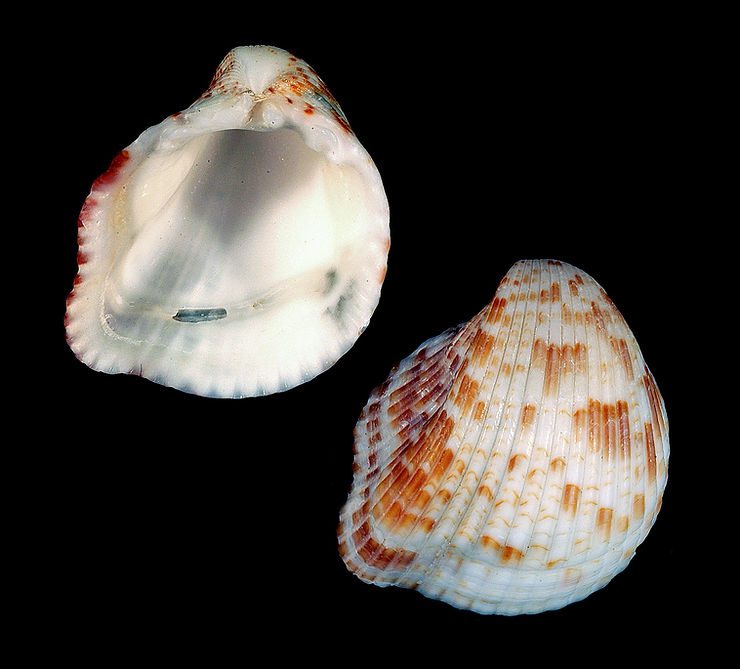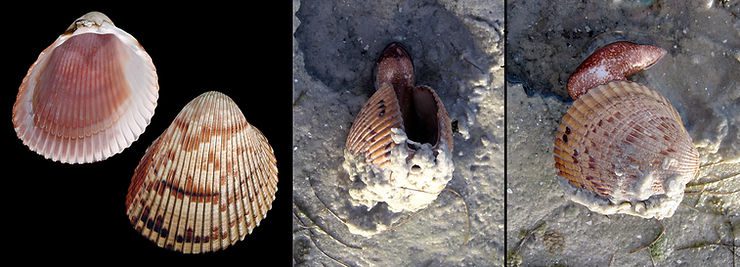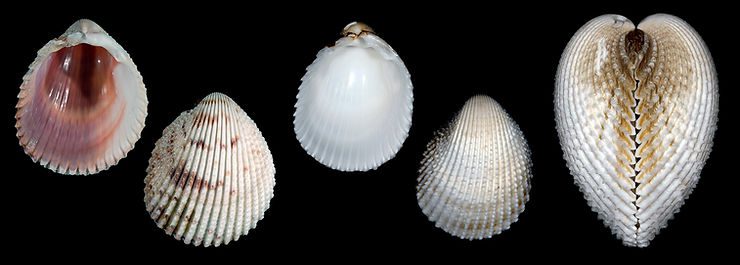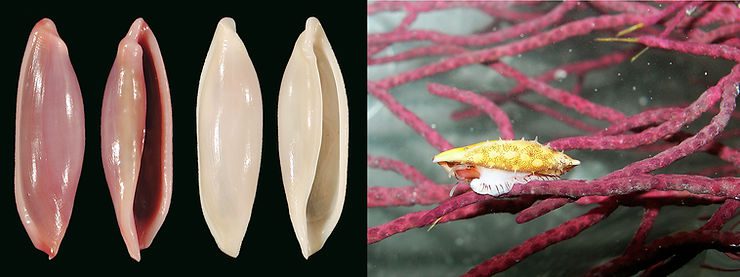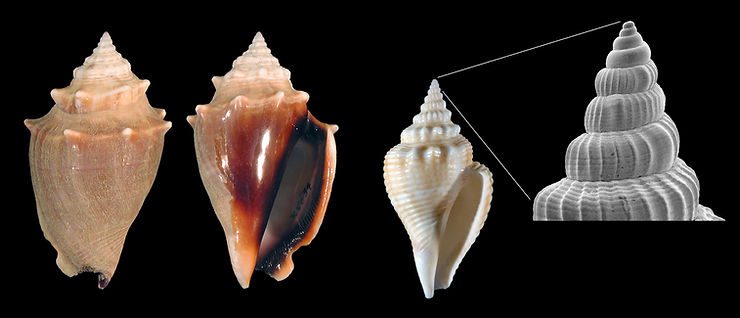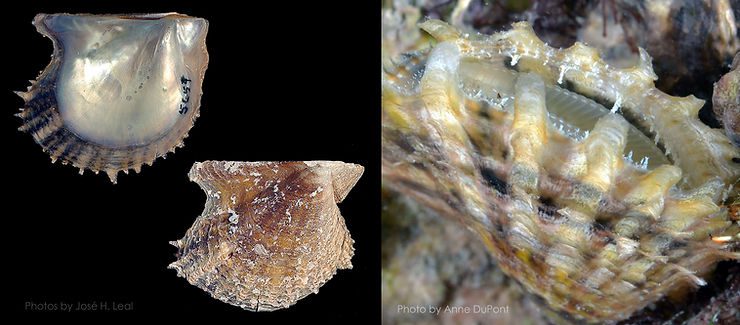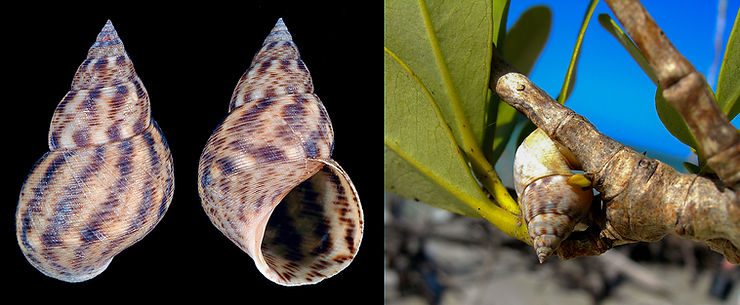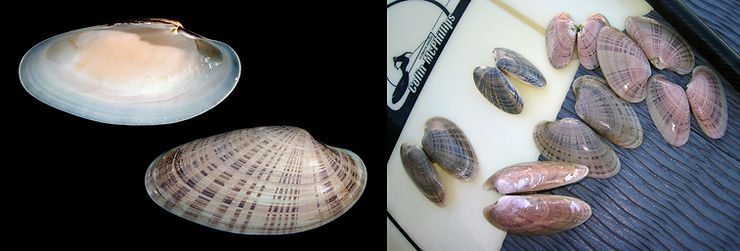
The Sunray Venus Clam
The Sunray Venus Clam, Macrocallista nimbosa (Lightfoot, 1786), is one of the most attractive members of a very diverse family of bivalve mollusks, the Veneridae. Sunray Venus Clams have shells that vary in color from salmon-pink to brown to grayish-blue. The “Sunray” pattern on the valves is always asymmetrical, i.e, one valve is not a mirror image of the other. A prized shellfish item, the species is being farmed in captivity in parts of Southwest Florida, including Pine Island in Lee County.
